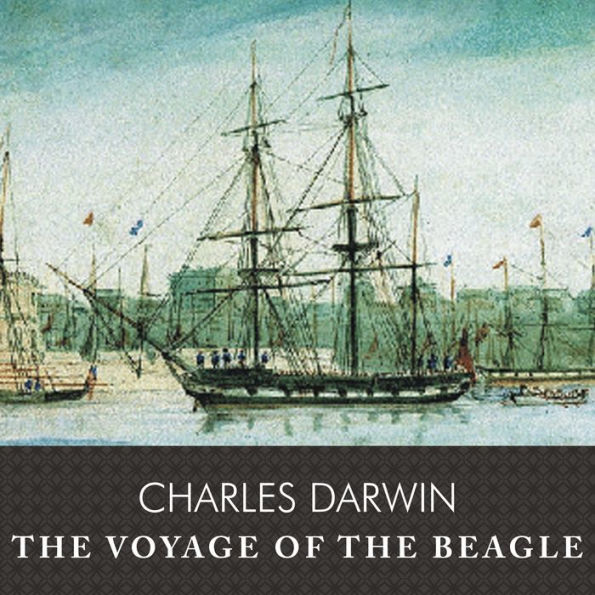The pairing of a narration by the greatest living evolutionary biologist, Dawkins, with the words of the greatest naturalist of all time, Darwin, is a stroke of genius. Darwin’s record of his five-year voyage across the globe—from Brazil to the Galapagos, from New Zealand and Australia to South Africa—is elegantly written, with profound insights and observations. Professor Richard Dawkins’s love for the subject matter shows in his gracefully precise articulation and mellifluous tone. His euphonic tone and precise but natural articulation make this adaptation of Darwin’s journals a pleasure to hear. S.E.S. © AudioFile 2014, Portland, Maine
Charles Darwin was just twenty-two when he went on his first voyage around the world in 1831. Darwin's father at first refused to allow his young son to go on the voyage. Fortunately, his father relented, and Darwin's journal is now considered by many to be the greatest scientific travel narrative ever written.
Revised by the author in 1860, this is an account of his experiences on the HMS Beagle, a ship that was mapping the coast of South America. What was set to be a two- or three-year voyage stretched out to a five-year adventure. Darwin took copious notes during the voyage, notes that would later lead to his formulation of the theory of evolution. He was able to observe coral reefs, fossil-filled rocks, earthquakes, and more, firsthand, and then make his own deductions.
1116747406
Revised by the author in 1860, this is an account of his experiences on the HMS Beagle, a ship that was mapping the coast of South America. What was set to be a two- or three-year voyage stretched out to a five-year adventure. Darwin took copious notes during the voyage, notes that would later lead to his formulation of the theory of evolution. He was able to observe coral reefs, fossil-filled rocks, earthquakes, and more, firsthand, and then make his own deductions.
The Voyage of the Beagle
Charles Darwin was just twenty-two when he went on his first voyage around the world in 1831. Darwin's father at first refused to allow his young son to go on the voyage. Fortunately, his father relented, and Darwin's journal is now considered by many to be the greatest scientific travel narrative ever written.
Revised by the author in 1860, this is an account of his experiences on the HMS Beagle, a ship that was mapping the coast of South America. What was set to be a two- or three-year voyage stretched out to a five-year adventure. Darwin took copious notes during the voyage, notes that would later lead to his formulation of the theory of evolution. He was able to observe coral reefs, fossil-filled rocks, earthquakes, and more, firsthand, and then make his own deductions.
Revised by the author in 1860, this is an account of his experiences on the HMS Beagle, a ship that was mapping the coast of South America. What was set to be a two- or three-year voyage stretched out to a five-year adventure. Darwin took copious notes during the voyage, notes that would later lead to his formulation of the theory of evolution. He was able to observe coral reefs, fossil-filled rocks, earthquakes, and more, firsthand, and then make his own deductions.
22.99
In Stock
5
1
22.99
In Stock

Editorial Reviews
Product Details
| BN ID: | 2940170893751 |
|---|---|
| Publisher: | Tantor Audio |
| Publication date: | 11/17/2008 |
| Edition description: | Unabridged |
Videos

From the B&N Reads Blog

